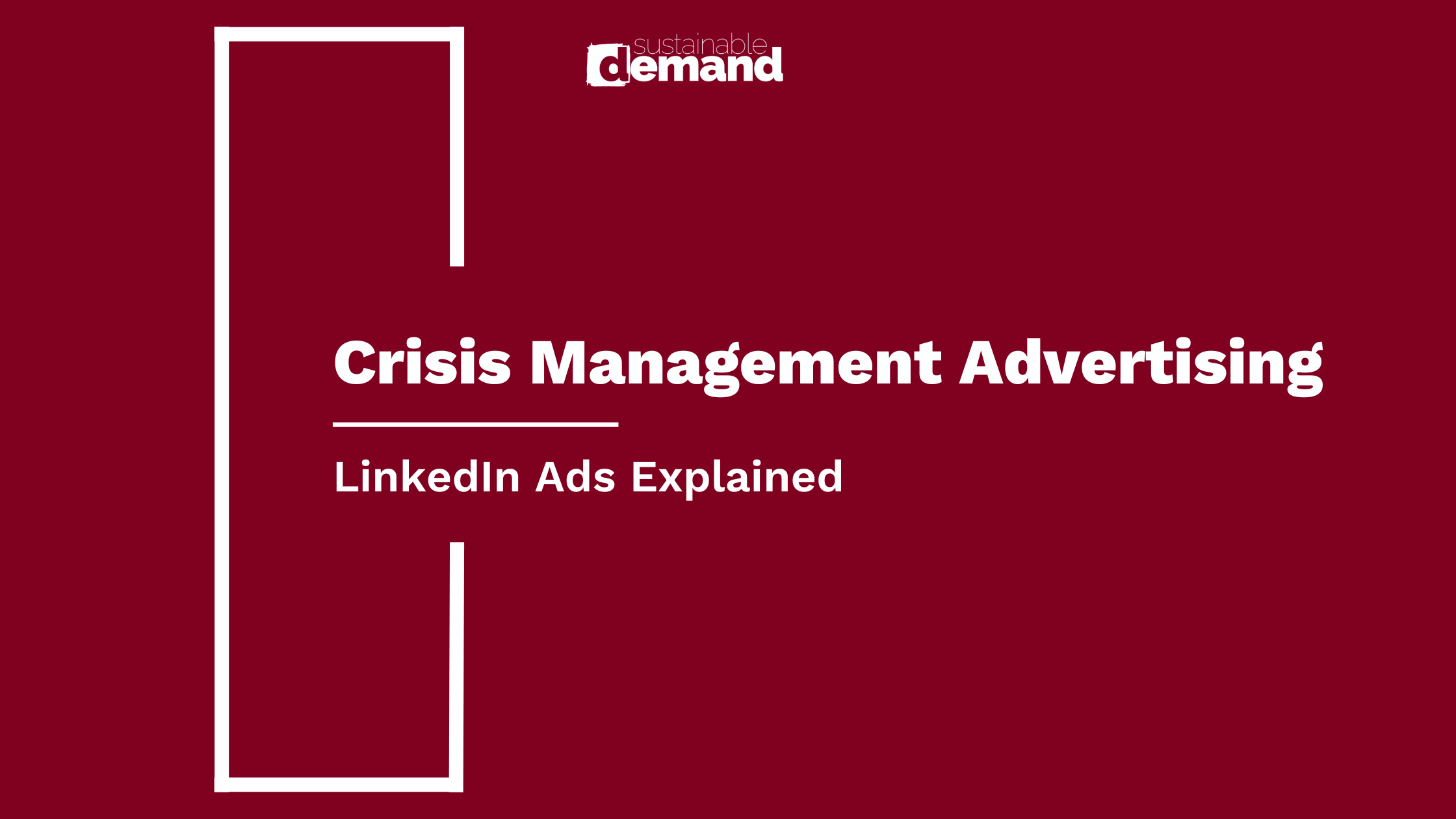LinkedIn Ads | Crisis Management Advertising

In the ever-connected world of today, even minor missteps can quickly escalate into public relations crises for businesses and organizations. When faced with such challenges, effective communication and strategic crisis management become crucial to mitigate negative impacts and restore public trust. LinkedIn Ads can play a vital role in this process, allowing you to reach targeted audiences, deliver clear messaging, and navigate the complexities of crisis communication during challenging times.
Understanding Crisis Management Advertising:
Crisis management advertising on LinkedIn utilizes the platform's targeted advertising capabilities to reach specific audiences during a crisis. It involves creating and deploying strategically crafted ad campaigns to achieve the following objectives:
- Communicate transparently: Clearly convey the organization's stance and actions taken in response to the crisis, building trust and demonstrating a commitment to addressing the situation.
- Control the narrative: Shape the public perception of the crisis by proactively sharing information, preventing the spread of misinformation, and fostering a sense of control.
- Maintain brand reputation: Minimize long-term reputational damage by demonstrating transparency, taking responsibility, and showcasing the organization's values in action.
- Engage stakeholders: Communicate with key audiences, such as employees, customers, and partners, during the crisis, fostering understanding and maintaining positive relationships.
Steps for Effective Crisis Management Advertising on LinkedIn:
While each crisis is unique, these steps offer a framework for developing and deploying effective crisis management advertising through LinkedIn Ads:
1. Planning and Preparation:
- Develop a comprehensive crisis communication plan: This plan should outline key messaging, communication channels, and roles and responsibilities during a crisis.
- Identify target audiences: Determine the specific groups you need to reach with your crisis communication efforts, including customers, employees, partners, and the broader community.
- Prepare crisis communication materials: Craft clear, concise, and honest messaging that addresses the situation head-on. This includes outlining the facts, expressing empathy, and communicating the steps being taken to address the crisis.
2. Launching the Campaign:
- Utilize LinkedIn's advanced targeting options: Narrow down your audience based on relevant factors like job titles, company size, and location to ensure your message reaches individuals with a direct interest in your organization.
- Craft targeted ad copy: Tailor your ad copy to resonate with each specific audience segment. Use clear and concise language, express empathy, and highlight the steps being taken to resolve the situation.
- Choose appropriate ad formats: Consider utilizing various ad formats like text ads, carousel ads, or video ads, depending on the nature of your message and the level of detail you need to convey.
3. Monitoring and Optimization:
- Monitor campaign performance: Closely track key metrics, such as impressions, reach, and engagement, to understand how your message is resonating with your audience.
- Adapt and optimize: Analyze data and adapt your messaging or targeting based on audience response and evolving circumstances throughout the crisis.
- Maintain transparency: Continue to provide timely and accurate updates as the situation unfolds, demonstrating your commitment to open communication and transparency.
Additional Strategies for Success:
- Leverage social proof: Include testimonials, case studies, or positive media mentions in your ad copy to build trust and credibility during challenging times.
- Humanize your message: Feature testimonials from employees, customers, or partners expressing their support and highlighting the organization's positive values.
- Express empathy and understanding: Acknowledge the negative impact of the crisis and express genuine concern for those affected.
- Demonstrate accountability: Take responsibility for the situation and outline the steps being taken to rectify the situation and prevent similar occurrences in the future.
- Crisis management advertising on LinkedIn can be a powerful tool for navigating challenging situations and protecting your organization's reputation. By planning effectively, crafting clear and targeted messaging, and actively monitoring your campaign, you can utilize LinkedIn Ads to communicate transparently, engage stakeholders, and ultimately, emerge from a crisis stronger than before.
Actionable Takeaways:
- Develop a comprehensive crisis communication plan before encountering a crisis.
- Identify specific target audiences for your crisis communication efforts.
- Prepare clear, concise, and honest messaging to address the situation.
- Utilize LinkedIn's advanced targeting options to reach relevant audiences.
- Craft targeted ad copy that resonates with each specific audience segment.
- Monitor campaign performance and adapt your messaging based on data insights.
- Maintain transparency throughout the crisis by providing timely updates.
- Leverage social proof and humanize your message to build trust and credibility.
- Express empathy and understanding, while demonstrating accountability
By proactively educating yourself on crisis communication best practices, familiarizing yourself with available resources, and implementing the mentioned strategies and takeaways, you can navigate even the most challenging situations with transparency, effectiveness, and a focus on rebuilding trust with your stakeholders..




